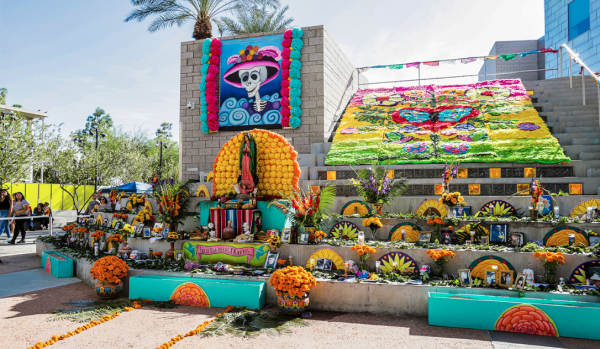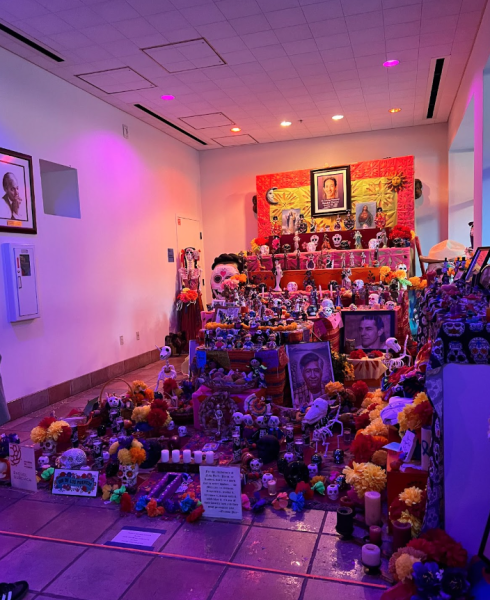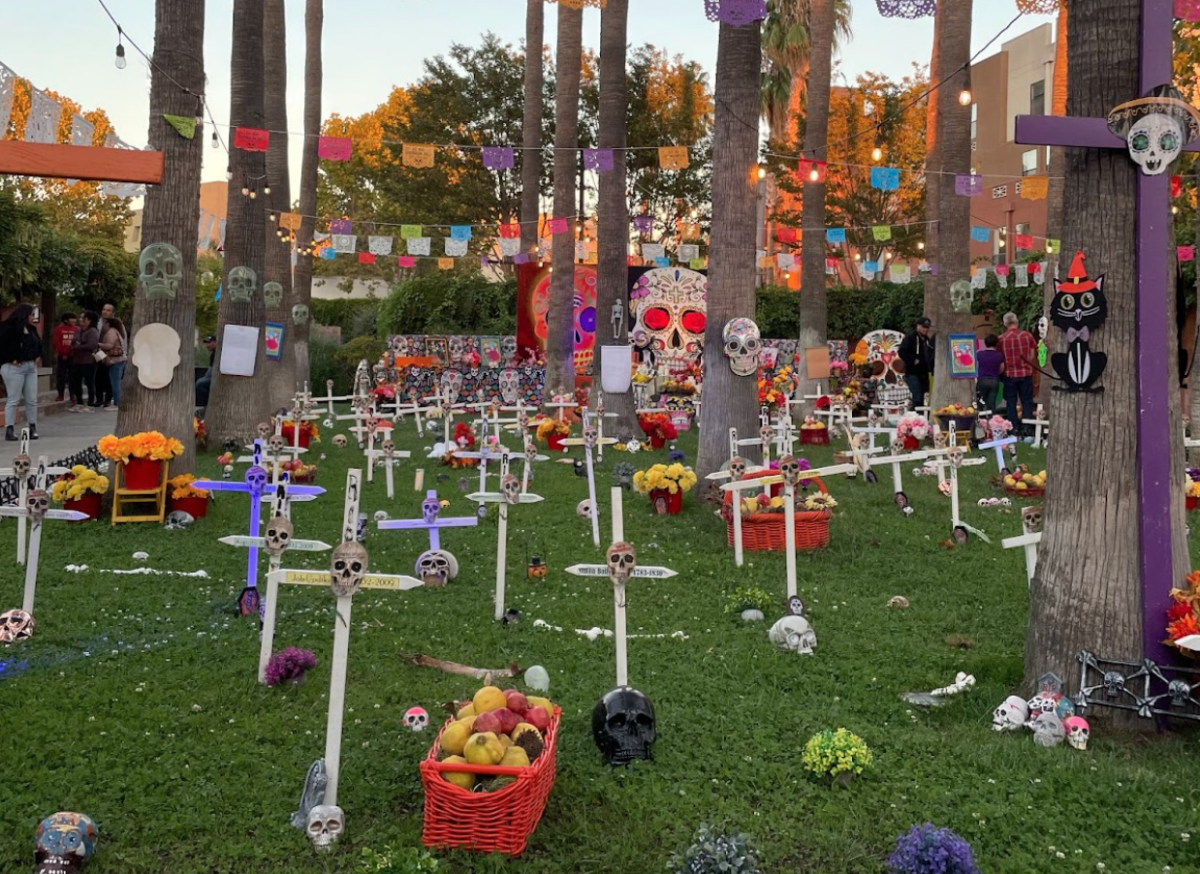Day of the Dead/Día de los Muertos: A blend of Mesoamerican ritual, European religion and Mexican culture, the holiday is celebrated each year from October 31-November 2.
Quite arguably one of the most universal symbols in America, Jack O’Lanterns are commonly seen during Halloween celebrations as a universal symbol of chasing the “haunted” away from their homes, whether it be stray ghosts or skeletons from their closets. But while we may blindly accept the tradition of putting an orange pumpkin in front of our homes, it’s safe to say that those who celebrate Día de los Muertos would respectfully disagree and probably ask us: Why chase those souls away if some of them are our loved ones?

In fact, despite the very similar themes and color schemes, Día de los Muertos, commonly celebrated as a way for families to celebrate their loved ones and honor their deaths, differs significantly from the Americanized Halloween. At Mitty, we host a scaled-down version of an ofrenda (an altar filled with pictures, marigolds, and lavish decorations) right next to the chapel. Some families even trace entire paths with marigold flowers to allow their ancestors to find their homes, although this would cause too much trouble in the 400-wing hallway.

Recently, I had the opportunity to attend the Avenida de Altares festival (roughly translated to Avenue of Altars) in Alum Rock (correction: I had to go because of the incentive of extra credit), and I didn’t expect much. Although I watched Coco when I was 11 years old and have gotten brief cultural immersions during my three years of taking Spanish at Mitty, the amount of information that I knew in no way captured the complexity and grandness of such a festival.
You could say Avenida de Altares is a microcosm of what the traditional Day of the Dead festivals are with everything you need but on a smaller scale: vendors, food trucks, dances, altars, papel picado, and calabazas de azúcar (sugar skulls). But many of us probably have little snippets of these items and traditions via pictures and videos from the internet, so you may be asking: Why attend it in person? The answer is pretty simple: the vibrant atmosphere.
The entire plaza was inundated with bright-colored lights, and some people were walking around wearing traditional clothing. Some were serving drinks, some were browsing over traditional masks and clothing, and most were taking pictures. It was hard to believe that all of this was happening in the middle of downtown San Jose.

Of course, the word “Altares” is in the name of the festival for a very good reason. Once you head into the inner portions of the plaza, there is an entire hall covered with altars that show off people’s creativity and tributes to those who have passed away. At one end of the hall, a massive altar around the size of ten tables stacked on top of each other included innumerable photos of friends, family, and other individuals. The altar was an enormous sight, but it was interesting that many weren’t necessarily mourning the loss of their loved ones; the sentimentality was more that of a celebration and honor for those who have passed.

Once we left the plaza, the entire street was covered with trucks that served horchata (a rice drink containing milk and cinnamon), tacos, quesadillas, burritos, and tortas. The tacos had a tangy acidic taste and the chicken and the carnitas were very tender, but the most satisfying part was the vendor actually understanding me when I ordered in Spanish. I was led to believe that all my years of Spanish class had paid off, and it was even more rewarding when my food came out.
Personally, my experience at Avenida de Altares was unlike any other, and I fully recommend it. This was the first time I had ever had full conversations that weren’t in my native tongues of English or Korean. So while your speaking exams or the occasional escuchar may pop up on your Canvas to-do list over the next few weeks, I have an assignment for you: to start treating Spanish class as a tool, rather than as another academic responsibility.


